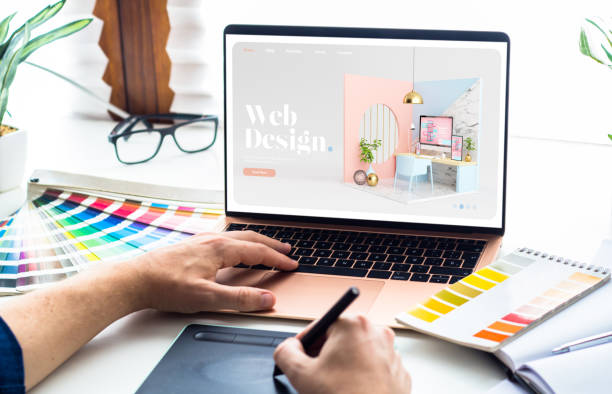Discover the Power of Modern Website Design for Company Development
Discover the Power of Modern Website Design for Company Development
Blog Article
Maximize User Experience With Ingenious Site Style Solutions
In today's digital landscape, taking full advantage of individual experience through innovative website design services is essential for services looking for to engage their audience properly. By embracing user-centric design principles, organizations can create interfaces that not just fulfill customer requirements but likewise boost overall contentment. Key elements such as receptive designs, instinctive navigation, and efficient visual power structure play a vital duty in this procedure. Nevertheless, the integration of interactive components can further boost the customer trip, triggering a reevaluation of standard style methods. What strategies might emerge when we consider the evolving assumptions of customers?
Recognizing User-Centric Layout

To apply user-centric style effectively, it is vital to carry out detailed research study, including individual interviews, surveys, and usability testing. These research methods supply important data that informs layout decisions, making sure that the end product lines up with user assumptions. In addition, producing individual characters can help developers visualize and empathize with the end-users, assisting the style process toward a lot more relevant services.
Furthermore, repetitive style is an essential element of user-centric techniques. By continually testing and refining styles based on individual responses, developers can recognize pain factors and areas of enhancement, leading to an extra refined final item. Ultimately, user-centric layout is not simply a phase in the growth procedure but a continuous commitment to focusing on individual requirements, resulting in more reliable and engaging electronic experiences.
Value of Responsive Layouts
As electronic interactions increasingly occur throughout a variety of gadgets, the significance of responsive formats can not be overstated. A receptive design guarantees that a site adapts perfectly to various display sizes, from desktop computer monitors to mobile phones. This versatility is important in today's multi-device landscape, where customers expect a consistent and appealing experience regardless of just how they access material.
The key benefit of receptive layout is boosted user satisfaction. When a web site is maximized for all gadgets, it minimizes the need for zooming, scrolling, or horizontal navigation, which can discourage users and lead to greater bounce rates. Furthermore, search engines like Google focus on mobile-friendly web sites in their ranking formulas, making receptive designs essential for efficient search engine optimization methods.
Instead of taking care of different versions of an internet site for various tools, a solitary, fluid style can be modified, conserving time and sources. Eventually, spending in receptive formats is not just a pattern; it is an essential concept of modern-day internet layout that significantly improves user experience and involvement.
Enhancing Navigating and Ease Of Access
Effective navigation and accessibility are crucial components of a properly designed web site, dramatically influencing customer involvement and fulfillment. An easy to use navigating structure permits visitors to find info swiftly and without effort, minimizing aggravation and increasing the probability of repeat sees. Executing clear, descriptive labels for navigation links, together with a sensible power structure, can guide users flawlessly through the internet site.
Ease of access is equally critical, making certain that all users, no matter of their capacities or impairments, can communicate with the site efficiently. This can be accomplished with the usage of ideal shade contrasts, message dimensions, and alt text for photos, which together improve the experience for aesthetically damaged users. Incorporating keyboard navigation and screen reader compatibility broadens access for customers with diverse demands.
Routine use testing can offer valuable understandings right into navigating performance and accessibility problems. By collecting comments from genuine individuals, designers can determine pain points and make enlightened adjustments. Eventually, prioritizing navigation and accessibility not only cultivates inclusivity but also grows a favorable user experience, enhancing the brand's commitment to top quality and individual care in an increasingly digital landscape.
Making Use Of Aesthetic Pecking Order Properly
Visual power structure works as a guiding structure in internet site layout, guiding users' attention to the most vital aspects on a web page. By strategically arranging aesthetic components such as typography, spacing, and shade, developers can develop a clear path for individuals to follow. This framework not only improves customer experience however additionally improves material comprehension.
One reliable means to develop visual power structure is with making use of size and scale. Larger components naturally draw in more focus, making headings and vital visuals famous. Enhancing this technique with contrasting colors can further distinguish key web content from additional details, making sure that essential information stands apart.
Moreover, the plan of elements plays a vital role in assisting customer interaction. Using a grid design can create a natural flow, while whitespace aids to separate web content and minimize cognitive load - Website Design. This willful spacing allows individuals to process information much more quickly, bring about enhanced engagement
Last but not least, utilizing regular design patterns aids strengthen aesthetic hierarchy, supplying users with familiar hints as they browse the website. By focusing on these principles, designers can effectively take full advantage of user experience, ensuring that site visitors can easily find the info they look for.
Integrating Interactive Elements
The unification of interactive components right into internet content site design can significantly improve user interaction and total experience. Interactive attributes such as polls, quizzes, and sliders not just mesmerize individuals however likewise promote active engagement, making the browsing experience much more memorable. By encouraging customers to interact, sites can effectively preserve interest and reduce bounce rates.
In addition, integrating dynamic web content like animations and float effects includes an appealing layer of interactivity. These components can direct users without effort via the website, highlighting essential information and phones call to action. Computer animated buttons can attract focus and improve click-through rates.
Moreover, personalization with interactive devices such as chatbots or referral engines allows web sites to deal with individual choices, cultivating a feeling of connection. This customized method not only improves customer complete satisfaction but also encourages repeat visits.
Incorporating analytics devices to track communications supplies important understandings right into user actions, allowing continual renovation of the interactive components. Ultimately, a well-designed interactive experience changes an easy browsing session right into an engaging journey, bring about enhanced individual fulfillment and loyalty. As a result, integrating interactive components is crucial for optimizing user experience in modern internet site design.
Final Thought

In today's electronic landscape, optimizing individual experience via ingenious web site layout solutions is critical for businesses looking for to involve their target market successfully. Inevitably, prioritizing navigating and ease of access not only promotes inclusivity however additionally cultivates a favorable individual experience, enhancing the brand's commitment to high quality and customer care in a significantly digital landscape.

In conclusion, making best use of individual experience with ingenious website design options requires a commitment to user-centric concepts. Website Design.
Report this page